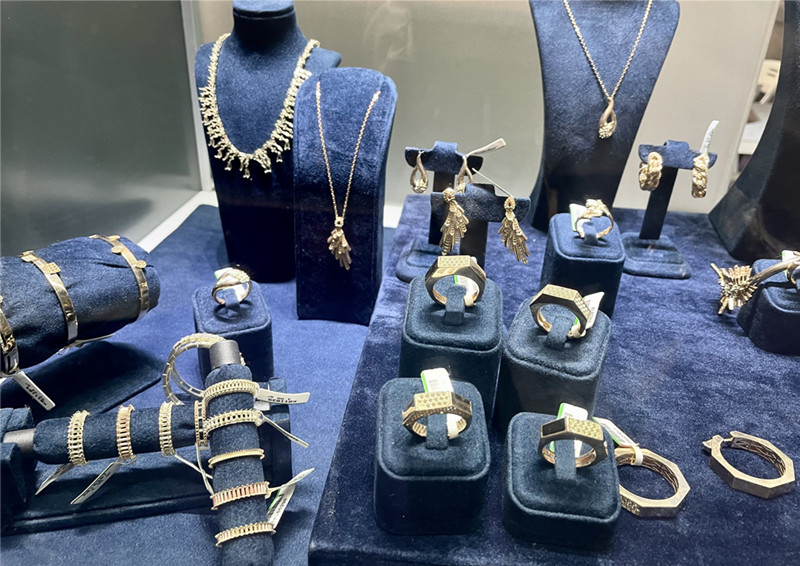Table of Contents
Introduction
When it comes to jewelry, the buzz around recycled gold has exploded. Brands tout it as the eco-friendly, ethical choice for conscious consumers. But is this recycled gold all that it’s cracked up to be? Are we truly making a responsible choice, or are we being sold a shiny lie? Let’s dig into the truths and myths surrounding recycled gold in jewellery is a lie.
Understanding Recycled Gold
What Is Recycled Gold?
Recycled gold refers to gold that has been repurposed from old jewelry, electronics, and other products. Essentially, it’s gold that’s been reclaimed from items that would otherwise contribute to waste. Sounds great, right? It’s like giving old gold a new life, but there’s more to the story.
How Is It Made?
The process involves melting down existing gold and refining it to remove impurities. This reclaimed gold can then be fashioned into new jewelry. While this method sounds sustainable, it often masks the underlying issues with quality and sourcing.
The Myths Surrounding Recycled Gold
Myth #1: All Recycled Gold Is Eco-Friendly
One of the biggest selling points of recycled gold is its supposed environmental benefit. While it’s true that recycling gold can reduce the need for new mining, the process isn’t without its environmental footprint. The refining process can still produce waste and use energy, raising questions about its overall sustainability.
Myth #2: Recycled Gold Is of Higher Quality
Many consumers believe that recycled gold is superior because it’s been previously used. However, the truth is that the quality of recycled gold can vary significantly. Gold jewelry can be mixed with alloys, affecting its purity and durability. Just because it’s recycled doesn’t mean it’s top-notch.
Myth #3: Buying Recycled Gold Supports Ethical Mining
Another common misconception is that purchasing recycled gold supports ethical mining practices. While it might reduce demand for newly mined gold, it doesn’t necessarily ensure that the gold you’re buying is conflict-free or ethically sourced. The market is complex, and transparency is often lacking.
The Reality of Recycled Gold
Environmental Impact
While recycled gold reduces the need for mining, the environmental impact is not entirely mitigated. The process of refining can release toxins into the environment and requires significant energy. This contradicts the image of sustainability that many brands promote.
Man made diamonds, also known as lab-grown or synthetic diamonds, have surged in popularity in recent years, and for good reason. Created using advanced technology that replicates the natural conditions under which diamonds form, these gems are chemically identical to their mined counterparts.
Quality Concerns
The quality of recycled gold can be inconsistent. Jewelry made from recycled gold may not always meet the same standards as newly mined gold. Depending on the source, you might be buying a piece that’s less durable or doesn’t have the same luster. Always ask about the gold’s purity before making a purchase.
Market Dynamics
The recycled gold market is also influenced by demand and supply dynamics. As more brands market their products as eco-friendly, prices may increase, potentially misleading consumers into thinking they’re paying for a premium product.
How to Make Informed Choices
Identifying Genuine Recycled Gold
If you’re considering purchasing recycled gold, look for certifications or stamps that indicate its quality and source. Reputable jewelers should provide transparency about where their gold comes from. Don’t hesitate to ask questions!
Supporting Sustainable Practices
You can still make a responsible choice by supporting brands that engage in truly sustainable practices. Look for those that disclose their sourcing methods and participate in initiatives to improve mining practices.
Alternatives to Recycled Gold
Fair Trade Gold
Fair Trade gold is a fantastic alternative for ethically-conscious consumers. This gold is sourced from mines that adhere to strict environmental and labor standards. By choosing Fair Trade, you’re directly supporting responsible practices.
Lab-Grown Jewelry
Another alternative is lab-grown jewelry. These pieces are created in controlled environments and can be made from recycled materials. They offer the look and feel of natural gold without the ethical concerns tied to mining.
Conclusion
While recycled gold might seem like a shining example of sustainable jewelry, the reality is a bit murkier. From environmental concerns to quality issues and ethical sourcing, it’s essential to peel back the layers of marketing and understand what you’re truly buying. The next time you’re in the market for gold jewelry, consider all your options, and make an informed choice that aligns with your values. Whether you choose recycled gold, Fair Trade, or lab-grown options, the goal should always be to support sustainable practices that make a real difference. Happy shopping!

